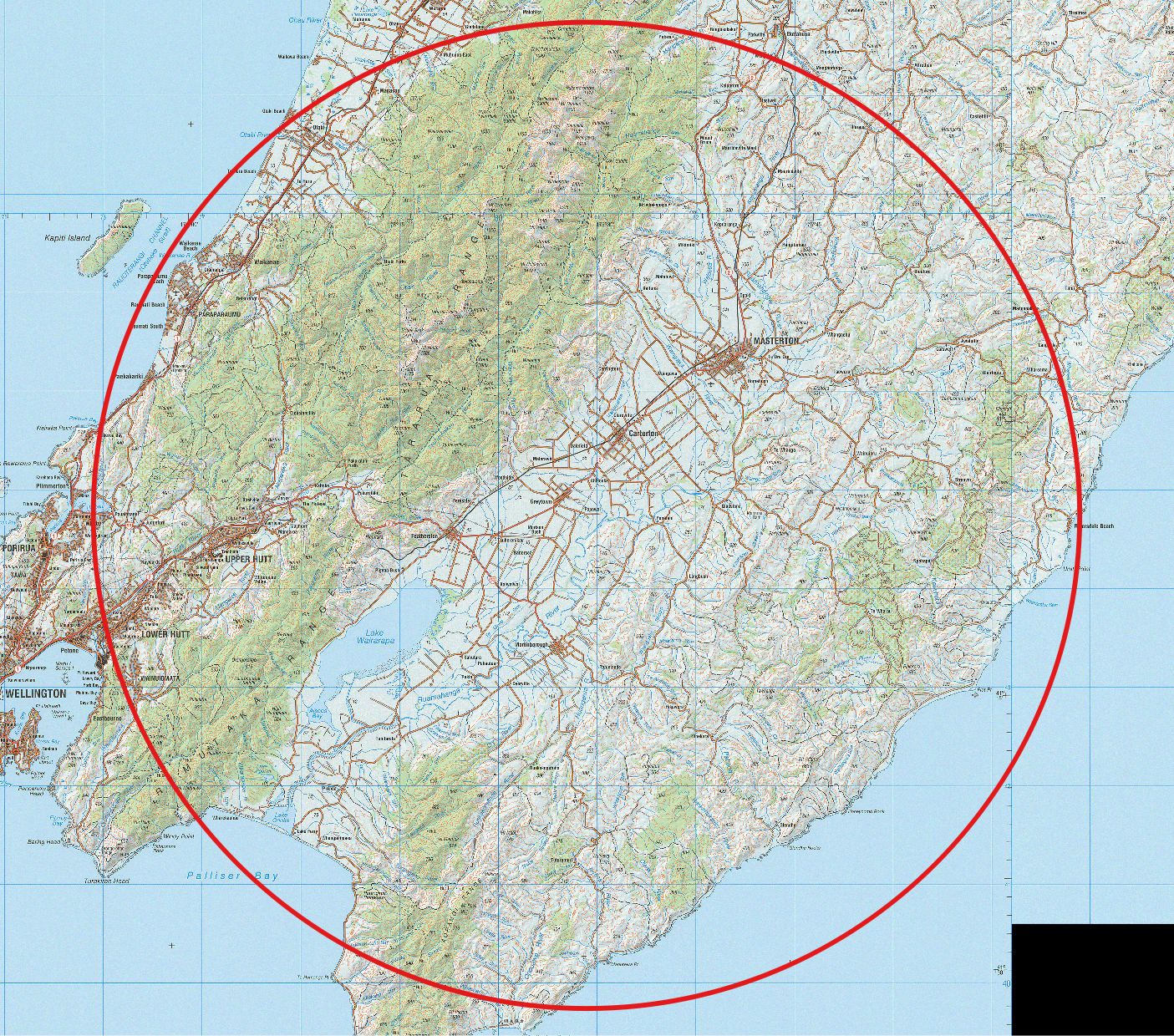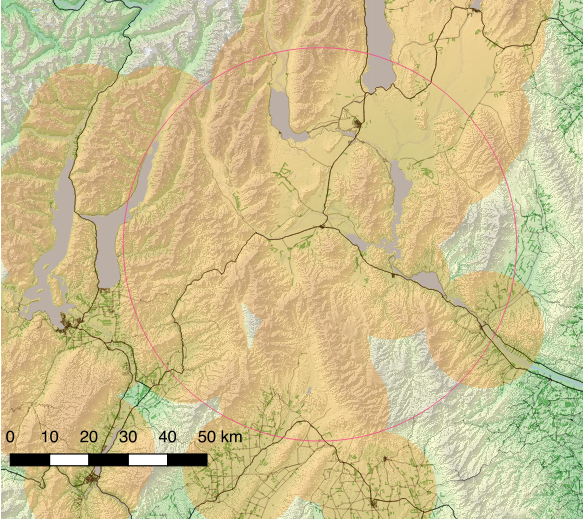The rules for the Silver distance flight are in the FAI Sporting Code Section 3, Chapter 2. Check the rules to make sure you understand what is required.
SILVER DISTANCE a straight distance flight of at least 50 km from the release point. The Silver distance should not be flown with guidance from another pilot.
That means in-flight coaching is not acceptable.
For a distance task the start is either the release point, or a start line. The finish is either at landing, finish line, or a fix. If you use a start line, the finish must be at least 50km from your release point. That means that unless you are claiming your Silver distance as part of a larger task, there is no advantage in using a start line.
Silver distance requires a finish fix at least 50 km from release, and may be done on ANY soaring performance.
This reiterates the point that the flight must finish at least 50km from release to qualify. It may be done as part of a larger task, for example it may be done as part of a 300km distance task. In that case, if you couldn't complete the 300km task as long as you had a point at least 50km from release you could claim the Silver distance. If you complete the 300km task, you can claim both Silver and Gold distance.
Loss of height between the start and finish must be less than 1% of the distance achieved for distances less than 100km. For a 50km flight that's 1640ft. Over 100km it's 3281ft.
You will need a Flight Recorder, and should ensure that the pilot and aircraft details are correctly entered in the recorder. Depending on how you fly the task, you may require waypoints to be declared.
Check the Sporting Code Section 3 Annex A Chapter 4.1 for Start and Finish considerations.
The task area will be a circle of 50km centered on the release point.
To help visualise the task area, get a current chart of the area you expect to fly and use a compass to draw a 50km circle on the chart.
If you use electronic flight planning software, set a waypoint with a 50km radius centered on the release area.
Another option on the computer is to use Google Earth. Zoom to the area you are expecting to use and use the measure tool to see what 50km looks like over the map.
Here's an example fifty kilometer circle around Papawai.

Since you must go 50km away from your release point, unless you're intending to claim your Silver Distance as part of a longer task, it will be easiest to start at release. This isn't part of the declaration so it doesn't require you to do anything with the flight recorder. When you release it is best to do a full circle to the right immediately. This will leave a distinct indication on your trace showing the release point. If you're winch launching you don't need to do anything to highlight the release.
Look for an energy line like a ridge, good thermal areas, a convergence area, or a wave line. Task along the energy, jumping from one lift source to another if you haven't got a continuous line of energy. Remember that 1000ft per 10km rule of thumb.
The finish for the Silver Distance can be either at landing, a finish line, or a fix. Only if you are using a finish line do you need to declare it in your flight recorder. A fix is a point recorded in the flight recorder and selected after the flight.
Using the landing as your finish lets you glide out the altitude from your last thermal, potentially giving you more distance. For example, if cloudbase is 3,000ft AGL, you can leave your last thermal 20km from your landing point, glide out to arrive at circuit height, and land. Pay attention to the loss of height rule here. If the finish is more than 1640ft below the release the flight doesn't meet the requirements if they're only 50km apart.
If you use a fix as the finish, you need to have working lift all the way to the fix point to allow you to work your way back. Finishing with a fix lets you finish high, so the loss of height requirement is easier to meet. You can finish over unlandable terrain (with safe glide back to your landable area, of course). The fix is selected after the flight, letting you chase the lift to the edge of your 50km ring rather than trying to get to a specific point which may not have lift nearby when you're there.
For a 50km distance, using the 1,000ft per 10km rule of thumb, you only need 5,000ft of altitude. Two 2,500ft climbs will get you the distance needed. If only you had one thermal at the start, one halfway, and an airfield at the end. Sadly that's not often the case. Even so, 3,000ft cloudbase gives you 2,000ft of working band and that's 20km to glide across the gaps.
If you have a good energy line running from your release point to a nice airstrip or good field with a friendly farmer that is just over 50km away and don't mind a retrieve, then your task selection is obvious.
In the case where the edge of your 50km circle seems to all be over unlandable terrain, you can follow the energy to the 50km line if you always have glide back to a good landable area. If you can't get back to the lift to soar home, just land out on the way back. You can then select a fix after the flight as your finish point.
The terrain is going to affect where the lift is, and the landable routes. Airspace may also affect which routes are practical. Find a selection of practical routes, then select the route that best matches the weather on the day.
Doing a Silver distance from Omarama poses a few problems. Starting from release at the top of the nursery ridge gives a task area that looks like this:

The pink line is approx 50km from the top of the nursery. The orange shading is areas within 15km of a landout strip from the landout book and turnpoint database.
The lift is usually best over the hills, so going north east toward Tekapo over the upper Mackenzie Basin might look like it's over nice friendly flat country, but it's not where the good lift generally lives.
To the west and northwest you quickly run in to big mountains. Going west you'll have to cross high mountain ranges, which means you'll have to cross them again to get home.
Southwest and south also put you over high mountain ranges that will present a challenge on the trip home.
Taking a route along the west side of the Omarama basin from nursery to Magic, Snowytop, Ohau, keeps you in glide of Omarama and over friendly airstrips. Continuing on to the top of Temple Stream will put you over 50km. The mountains in that area are 7,000ft plus. That's well over glide to Omarama. The whole flight never puts you on the wrong side of a mountain range, the landouts are all in the Omarama basin.
This route would work on a light wind thermal day. Thermal tops would need to be at least 1,000ft above the tops of the mountains.
As you would select the finish point post-flight, and you'd be finishing high, probably 7 - 8,000ft, the loss of height wouldn't be an issue. Starting from nursery would be 3,500ft normally, so your finish would be above your start.